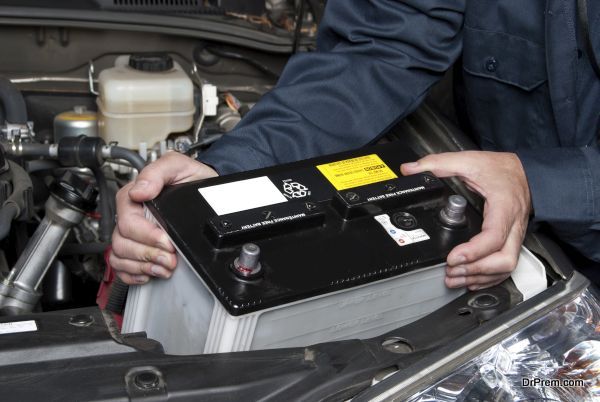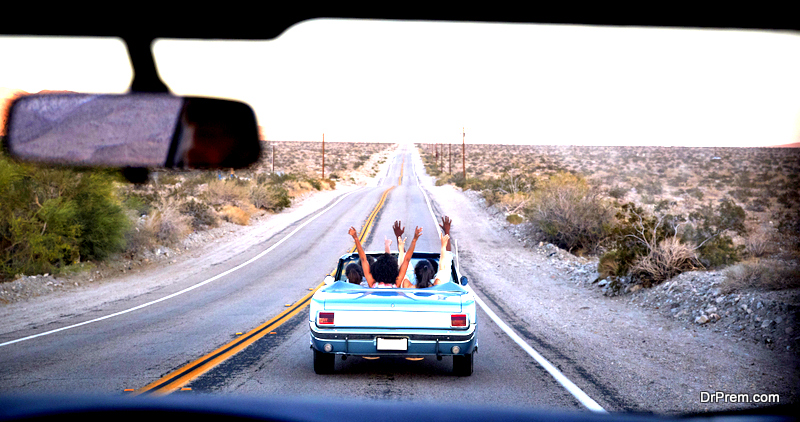The road trip across the country is still a favorite rite of passage for travelers of any age. There are some with the luxury of taking RVs across the country while most people are confined to their car, truck, or SUV. Preparing the vehicle and yourself are equally important a traveler should plan proactively. Reactive thinking can lead to issues during the infancy of this long and rewarding trip. The budget of the trip should incorporate lodging that is reasonable distances away to avoid exhaustion. The budget should also include money that will help get the vehicle into top shape. Running smoothly throughout the duration of the trip should be the goal of this maintenance/repair work. The following are preparation for your vehicle and yourself personally before a cross-country road trip.
1. Be Honest About Your Vehicle’s Overall Health

Honesty about a vehicle’s ability to endure a grueling trip across the country is essential. Being involved in a car accident due to being broken down, brakes failing, or tires blowing can have immense consequences. Rental cars are reasonably priced depending on the type of car desired. Take this into consideration if you aren’t willing to abandon your dream of the perfect cross-country road trip.
2. Oil/Fluid Changes
Oil being changed every 5,000 miles is great for the health of the car. The odds are that an oil change will be in order as traversing the country will be up to a 6000 to 8000-mile trip. For those stopping at a myriad of locations, it could be longer requiring an oil change during the trip. Try to make these stops near friends or family as they can recommend a reliable garage or oil change center to visit. Replacing and topping off all fluids is not always necessary but for those fluid changes approach, it is wise to take care of it.
3. Check Tires

The tires are going to be as important as any other aspect of the vehicle. A blown tire on the highway can have deadly consequences. Checking the tread of the tires is important as the worn tread on one tire and not the others could identify an alignment problem. New tires are not necessary as the life of a set of tires can be quite lengthy depending on the mileage put on them. Purchasing an extra used tire is an affordable way to ensure safe travels and helps avoid using a donut tire which only lasts from 70 to 90 miles.
4. Lights Check and Cleaning
Checking brake lights, headlights, and high beams could not be more important. A driver wants to be seen when it is dark or it is raining or snowing. Cleaning headlights is important as dirty lights might not allow a driver to see as well as ones without a fog of dirt/grime. Bringing a few extra brake lights is wise in case one goes out quite a long distance from the next store they can be bought.
5. Keep Luggage in Secured Places

Overpacking the vehicle will only make for hours of discomfort with items that will most likely not be utilized. The danger of overpacking a vehicle can include hindering the vision of the driver. In the case of an accident, a loose piece of luggage can cause serious injury. The storage area in an SUV is going to be more accommodating to travelers that pack quite a bit. This type of vehicle does increase the gas budget for the trip when compared to a smaller sedan. Take a look at the many options to pack tightly that there are available online or via travel-based websites.
6. Avoid Driving Tired
Taking breaks during the trip might seem counter intuitive for those that have a packed schedule. A small 20-minute break at a fast-food establishment or inside of a gas station can make a difference. In the days leading up to the trip, it is very important to get the appropriate amounts of rest. Even though this trip could be considered vacation your mind has to be sharp due to the drive. Be reasonable about the timeline and schedule that has been set as driving 20-hours per day is only possible with multiple people.
Driving across the desert or in the flat areas of the country like the Midwest can be boring but there is no excuse for driving tired. A few friends or family members sharing driving responsibilities can help break the trip up. Multiple drivers also will allow the group on the trip to cover vast distances in a single day.
7. Detailed Map and Schedule to Avoid Traffic

Driving through the Washington DC area during rush hour could lead travelers to sit in gridlock traffic for hours on end. Taking a look at the different traffic patterns in particular areas can help travelers avoid massive delays. Driving during the night comes with its risks but does reduce traffic immensely. There are going to be vast areas without any type of traffic throughout the country so it will not be a prevalent problem. The attractions that can be missed if the trip is running behind have to be identified. Missing out on the top attraction for one traveler can sour the trip for this individual. Lampert & Walsh note the dangers of rushing, “One of the worst mistakes a driver makes regularly is rushing while driving. From unexpected delays, weather changes, road construction, or just generally running late, many things can cause us to be less safe on the road.”
Prepare for the worst and hope for the best during your road trip. The US has immense beauty and a variety of landscapes to marvel over. Research the best road trip possible in terms of locations as this can be a great place to start!
Article Submitted By Community Writer




